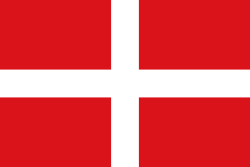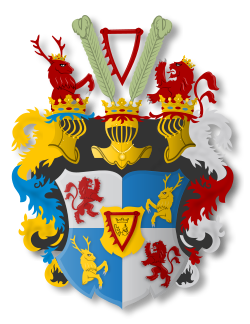Kuronské a zemgalské vévodství
| Kuronské a zemgalské vévodství Ducatus Curlandiæ et Semigalliæ (la) Kurzemes un Zemgales hercogiste (lv) Księstwo Kurlandii i Semigalii (pl) Herzogtum Kurland und Semgallen (de)
| |||||||||||
geografie
| |||||||||||
rozloha: | |||||||||||
| obyvatelstvo | |||||||||||
počet obyvatel: | |||||||||||
národnostní složení: | |||||||||||
| státní útvar | |||||||||||
vznik: | 28. listopadu 1561 – velmistr Livonského řádu se smluvně poddal Polsko-litevské unii 5. března 1562 – lenní slib | ||||||||||
zánik: | 28. března 1795 – anexe Ruským impériem | ||||||||||
| státní útvary a území | |||||||||||
| |||||||||||
Kuronsko-zemgalské vévodství, pod vlivem polštiny někdy knížectví, (latinsky Ducatus Curlandiæ et Semigalliæ; polsky Księstwo Kurlandii i Semigalii; německy Herzogtum Kurland und Semgallen; lotyšsky Kurzemes un Zemgales hercogiste), zkráceně též Kuronské vévodství/knížectví (Ducatus Curlandiæ; Księstwo Kurlandii; Herzogtum Kurland; Kurzemes hercogiste) byl státní útvar v Pobaltí, který existoval od roku 1562 do roku 1791 jako lenní území Litevského velkoknížectví a později Republiky obou národů.
Historie

Mělo také kuronské kolonie v Africe a Americe. Roku 1791 dosáhlo vévodství plné nezávislosti, ale již roku 1795 bylo v rámci třetího dělení Polska anektováno Ruskou říší a na jeho území ustavena Kuronská gubernie.

Původním sídelním městem bylo kuronské Goldingen (lotyšsky Kuldīga), později byla správa vévodství přenesena do zemgalské Mitavy, dnes známé pod lotyšským jménem Jelgava.
Související články
Externí odkazy
 Obrázky, zvuky či videa k tématu Kuronské a zemgalské vévodství na Wikimedia Commons
Obrázky, zvuky či videa k tématu Kuronské a zemgalské vévodství na Wikimedia Commons
Média použitá na této stránce
Flag of the State of the Teutonic Order
The civil ensign and flag of Belgium. It is identical to Image:Flag of Belgium.svg except that it has a 2:3 ratio, instead of 13:15.
Autor: F l a n k e r, Licence: CC BY-SA 2.5
Při zobrazení tohoto souboru lze snadno přidat orámování
Variant version of a flag of Japan, used between January 27, 1870 and August 13, 1999 (aspect ratio 7:10).
Flag of the Germans(1866-1871)
Flag of the Germans(1866-1871)
Imperio Portugués
House colours of the House of Habsburg
A variant of the flag of the Kingdom of Hungary used between 12 January 1896 to 6 November 1915.
US Flag with 48 stars. In use for 47 years from July 4, 1912, to July 3, 1959.
Autor: No machine-readable author provided. MapMaster assumed (based on copyright claims)., Licence: CC BY-SA 3.0
The Duchy of Courland and Semigallia in 1740.
Autor: Gabriel Ziegler, Licence: CC BY-SA 4.0
Duchy of Courland and its colonies (Also the Polish-Lithuanian commonwealth colored)
Autor: Hierakares, Licence: CC0
These are the colors ("Landesfarben") of the Russian-dominated Governorate of Courland, according to these Latvian [1] and Russian [2] vexillographic websites.
Autor: Ningyou., Licence: CC BY-SA 3.0
Flag with the cross of Burgundy (saltire). Also named Cross of Burgundy flag. It was used in the Catholic Monarchy and in its viceroyalties such as New Spain and Peru. It was also used by Spain as a military or king's prosonal flag. Used by the Carlist movement.
Autor: Alex Tora, Licence: CC BY 3.0
Flags of Ruthenian lands in the battle of Tannenberg, 1410.
Autor:
- Blason_Oscar_II_de_Suède.svg: User:Sodacan
Ducatus Curlandiæ et Semigalliæ. Coat of arms
Autor: A.Buks, SVG is Vlastní dílo, Licence: CC0
Coat of Arms of Duchy of Courland and Semigallia
The Ottoman flag and Turkey Republic Flag of 1844–1935. Late Ottoman flag which was made based on the historical documents listed in the Source section. Note that a five-pointed star was rarely used in the crescent-and-star symbol before the 19th century.
Imperio Portugués
Autor: KoziPLUS, Licence: CC BY-SA 4.0
Royal banner (not a flag) of the Polish-Lithuanian Commonwealth from 1569-1795





























